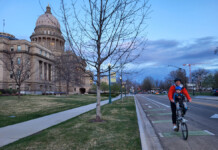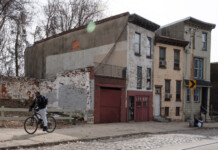By Charles Pekow
What’s the best way to choose grantees for Safe Routes to School (SRS) programs? States should get info from applicants on existing conditions they propose to remedy, proposed plans and methods for assessing outcomes. But some questions remain unanswered on the best way to choose, according to a federal study on the issue.
The Federal Highway Administration (FHWA) contracted with the Washington State Transportation Center at the University of Washington and the Washington State Department of Transportation to conduct a study on how states select grantees.
Under SRS, the U.S. Department of Transportation gives each state funding to support state or local efforts to get children to bike or walk to work safely. The program has proven extremely popular and most states have to choose carefully among grant applicants because they’re faced with more demand for funds than money available.
The program faces danger of extinction, though, because Republicans, who constitute a majority in the House of Representatives, have drafted a bill to end the earmark starting in FY 12, which begins in October.
The new report, So Many Choices, So Many Ways to Choose: How Five State Departments of Transportation Select Safe Routes to School Programs for Funding, looked at how five states choose SRS grantees. These states are participating in the SRS Statewide Mobility Assessment study.
The researchers said not enough data exist yet to determine SRS’ overall effectiveness or even the effectiveness of state grantee selection criteria. They could only document ways states choose and recommend methods that work.
Some states separated the grants they chose into infrastructure and non-infrastructure projects while some combined them (such as building bike paths vs. educating children). Each method produces pros and cons. So the study recommends more research into the question of whether the two should be combined.
Nor could the researchers determine whether it’s a good idea or not to place floors or ceilings on grant amounts.
All five of the states in the study; Florida, Washington state, Texas, Mississippi and Wisconsin; awarded grant applicants points based on various criteria. They generally included the quality of the proposal and how they adhered to SRS goals: eliminating barriers to walking and biking to school, inclusion of education, engineering, etc.
Utah received $2,039,556 in SRS funding in FY 11. Since the program started in FY 05, Utah received a total of $9,895,679.
The Utah Department of Transportation (UDOT) awards grants on a two-year cycle. Last cycle, it got about 50 applications and funded five. If funding continues in the next fiscal year, it plans to award another five or six grants from the same pile, says UDOT Safety Programs Engineer Scott Jones, who manages UDOT’s federal safety money.
UDOT uses a citizens advisory committee to review applications. Members include representatives of bicycle and pedestrian advocacy groups, the National Park Service, FHWA, UDOT and the Utah Department of Health.
Utah awarded exclusively grants involving infrastructure last time. We found that the schools the first two rounds really struggled spending it. Some of the limitations and strings attached with federal money tripped up the grantees, Jones explains. So UDOT decided to focus the education component at the state level. We have various presentations, give materials to schools and developed a web-based software schools can use to designate safe walking routes on an online map and provide to parents. The non-infrastructure component is very important but administering and managing it statewide has been more effective than giving targeted grants at specific locations, Jones says.
He added that some cities have shied away from getting federal money because of all the rules and paperwork. We have really prided ourselves on providing a project team with a project manager…who will walk the local communities through the entire process (and) make sure all the federal requirements and paperwork are met. We try to take the burden off the local jurisdictions, Jones says. Some states haven’t been able to spend a lot of this money on the local level because of those challenges.
UDOT hasn’t set floors or ceilings on grant amounts. And in addition to judging applications on merit, it tries to spread the money around the state, with a mix to urban and rural communities.
It’s not uncommon for an applicant to want $500,000 to pave sidewalks on both sides of the street. The committee will say ‘we’ll give you $250,000 to do one side of the street.’ We have told applicants to please limit your applications to, say, 2,000 feet of sidewalk, Jones says. Some cities add their own money.
View the report at http://www.wsdot.wa.gov/research/reports/fullreports/743.2.pdf.
Read about Utah’s SRS program at http://www.udot.utah.gov/main/f?p=100:pg:0::::V,T:,1388.
Idaho received $1,109,953 this year and $7,099,953 overall. Read about Idaho’s program at http://www.saferoutespartnership.org/state/statemap/idaho.






